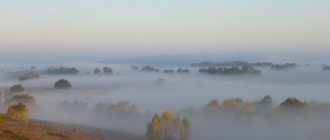What do astronauts do?
To become an astronaut, you need to be in excellent health, strong, resilient - and smart, of course. On earth, astronauts train a lot and prepare for flight in order to calmly withstand overloads in space.
When astronauts arrive at the ISS space station, they work in laboratories and conduct a variety of experiments. They study the behavior of matter under conditions of weightlessness and conduct biological and medical experiments. All this is necessary so that people can create new useful materials and understand how weightlessness affects the body. Without this, further space exploration is impossible. Sometimes astronauts don complex, heavy spacesuits and go into outer space to fix something outside the station. They must exercise for two hours a day to keep their muscles in working condition: in zero gravity there is almost no stress, and the muscles weaken. The astronauts eat not from plates - after all, the food would fly away - but from special tubes. And they have to sleep in a sleeping bag, which is tied to the wall. But falling asleep without the usual gravity is also not so easy.
What to watch and read: films “Apollo 13” (12+), “The Time of the First” (6+). Book by D. Kostyukov, Z. Surov “Space. Incredible stories about rockets and space stations, about heroes and inventors..."
photo: www.roscosmos.ru
How do stars live?
Stars are visible not only at night, because our Sun is also a star! It's just that the rest of the stars are too far away from us in the Universe, so they appear small.
New stars are born from clouds of hydrogen gas left after the Big Bang or the explosion of old stars. The force of gravity binds this gas into balls, it rotates and heats up so much that the nuclei of hydrogen atoms combine. This is called a thermonuclear reaction - it occurs with a new explosion, a flash of light - and this is how a new star is born. A star also grows and changes: it can become a “red giant”, then shed its outer layers and turn into a “white dwarf”, explode to become a supernova, and even turn into a “black hole”.
What to watch and read: US TV series “Cosmos: Space and Time.” The story of E. Levitan “Secrets of our Sun”.
To space with children!A selection of amazing space-themed games to play at home. By playing, we gain knowledge in practice! |
Spaceships, stations, Mars rovers, lunar rovers
The very first spacecraft flew into space in 1957 - 4 years before Yuri Gagarin, and also in the Soviet Union. It was the first artificial satellite of the Earth, similar to a ball with four legs. It flew and squeaked - it transmitted radio signals to Earth.
Since then, people have invented and launched many devices and stations into space. Some fly in orbit around the Earth, taking pictures of our planet, sending us photographs and other messages. Thanks to them, we have accurate maps and we can also predict the weather better. Other spacecraft, such as the American Voyager, fly far, far away to send us pictures of other planets. Still others land on the Moon or Mars, ride on them and send messages to Earth - these are lunar rovers and rovers. Lunokhods were even able to send samples of lunar dust back to Earth.
The most complex ships are those on which astronauts fly. There are entire space stations that were sent into Earth orbit so that astronauts could fly there as if to work and conduct research. Now the largest station in orbit is the Russian International Space Station (ISS), where cosmonauts from different countries work. To launch an astronaut or cargo from Earth into space, you need a lot of fuel. When a rocket takes off, it burns this fuel and burns itself out almost entirely - only a small capsule remains, which flies further on its business. But today, designers are creating “reusable” rockets that do not burn up during takeoff, but return to earth—these are Elon Musk’s “Falcon” rockets.
What to watch and read: feature films “Salyut-7” (12+), “Man on the Moon” (12+), Russian mini-series about the space race “Open Space”. Books by A. Tkachenko “Tsiolkovsky. The path to the stars”, N. Akulova, M. Kornienko “What can I learn from Sergei Korolev”, O. Solomatin “What can I learn from Elon Musk”.
Moon jump and gravity
On the Moon we can jump much higher and further than on Earth. You can measure your “earthly jump”: go out into the yard, jump, mark the beginning and end of the jump with chalk, measure the length with a tape measure. So, if you add five more of the same jump to your jump, you get a “moon jump”. This is how we would jump on the moon! And all because there is less gravity there. The smaller the weight of a planet or other celestial body, the less it attracts a person and everything that is on its surface. True, on the Moon you will have to wear a spacesuit, and jumping in it will not be so comfortable.
The “Martian jump” is 2.5 times larger than the Earth’s, and on Jupiter, on the contrary, it is 2.5 times smaller. On Jupiter or Saturn it would be difficult for us to even just walk - such is the force of gravity there due to the enormous mass of the planets. But if you are in outer space, far from any planets and asteroids, you will float in weightlessness. That’s why astronauts float in their spaceships as if in water—nothing attracts them.
What to watch and read: BBC series “Planets”, book by R. Pringe “Planetarium”.
photo: www.roscosmos.ru
What is the Universe
The Universe is all the stars, planets, comets, asteroids - all the matter that is around us. All we know about it is that it is very, very big. How it arose and how it develops is one of the biggest mysteries.
But many scientists believe that the Big Bang occurred 13 billion years ago, and from it the Universe was born. After the explosion, it began to expand in all directions: at first they were just vortexes of energy, then tiny particles appeared from them, then they connected and turned into atoms - the “bricks” of which our entire world is composed. At that time, light still moved freely in space, but after hundreds of millions of years, the atoms gathered into huge clouds, which condensed and became the first stars. Then these stars divided into groups - galaxies, and the Universe became similar to what we see now. Planets appeared around many stars.
The universe is growing, and no one yet knows what will happen next. Maybe it will grow endlessly, or maybe after a long time it will begin to shrink back.
What to watch and read: the BBC mini-series “The Beginning and the End of the Universe,” the National Geographic feature film “Journey to the End of the Universe.” Fiction story by E. Levitan “The Fabulous Adventures of a Little Astronomer.”
Why did people come up with constellations?
Since ancient times, people have looked at the sky and seen animals, birds and heroes from their myths and fairy tales. They seemed to be drawn with the help of stars, and such figures in the sky are called constellations. Each constellation had names, for example: Ursa Minor and Ursa Major, Cygnus, Pisces, Canis Minor. And the bright stars also have names: Altair, Vega, Betelgeuse. Stars in the same constellation are not necessarily close to each other, there can be huge distances between them, but from Earth it seems that they are nearby.
Each nation found its own constellation patterns in the sky and named them in its own way. Today we use the names that were invented by the ancient Greeks. People needed constellations not just for beauty - they helped them navigate while traveling, when there was no navigator or compass yet. For example, people knew that the North Star in the tail of Ursa Minor always points north.
What to watch and read: BBC series Stargazing. Book by A. Ganeri “Legends of the Night Sky”
Stunning photographs from the real life of astronauts, a selection of photographs of the Earth from space, spacewalks, experiments, docking of spacecraft - on the Roscosmos website
The Moon is the Earth's satellite
The moon revolves around the Earth and cannot fly away anywhere, because the Earth attracts it. And she is always turned to us with the same side. The moon is much smaller than our planet, it is like an apple next to a watermelon or like an average dog next to a person. And the distance from the Earth to the Moon is thirty times the size of the Earth itself. If we could go to our companion by car, the journey would take six months.
The Moon itself cannot shine; it is cold and covered with a thick layer of cosmic dust. But it reflects the light of the Sun - that’s why we see it glowing in the sky. If you take a ball and call it the Moon, then take a flashlight and name it the Sun, then you can figure it out. When we shine a flashlight on the ball, on one side it appears round and bright, like the Moon on a full moon. But on the other hand, it is dark and unlit, like the Moon on moonless nights. And if we look at the ball from the side, we will see the illuminated part of the surface - like the “month” of the Moon in its growing or aging phase.
What to watch and read: films “In the Shadow of the Moon”, “Why do we need the Moon?” Book by E. Kachur “Fascinating astronomy. Children's encyclopedias with Chevostik."
What to give to a space loverWe will tell you in more detail and with pictures what cosmic things you can buy for your child in children’s stores today. |



